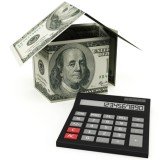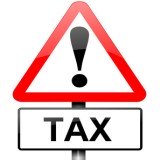Rental Property Analysis - Calculating Rental Yield
Knowing how to calculate rental yield is important for rental property analysis. Learn the difference between gross and net rental yield here.
Why Rental Yield Matters for Rental Property Analysis
If you look at the sales ads for rental properties, you'll often find real estate agents and sellers touting about the property's rental yield. So what exactly is this yield that they're harping about?
Definition: Rental yield is the annual income of a rental property vs its purchase price.
Rental yield is very popular among rental property investors because it is a quick and easy way to analyze and compare rental returns between different rental properties. For a more in-depth rental property analysis, we recommend that you consider the cash on cash returns of the property as well.
All things being equal, a rental property with higher yields will be better investment choice since you get more returns for every dollar invested. Naturally there are a lot more things to consider when buying rental
property but a quick rental yield calculation can tell you whether the property is worth a closer look.
Calculate GROSS Rental Yield for a Quick Estimate
Most of the time when people and articles discuss about rental yields, they're in fact referring to gross rental yield.
Gross Rental Yield Formula = (Annual Rent / Total Property Cost) x 100%
Total Property Cost - Includes property's purchase price, closing fees, stamp duty and renovation costs.
As you can see, this yield is expressed as a percentage. So what is a good rental yield? In general, most rental property investor consider a yield of 10% and higher to be good. Most rental properties have an average yield of 3 to 8%.
Calculate NET Rental Yield for More Accurate Results
For your personal rental property analysis, we highly recommend you to use net rental yield instead. They tend to be more accurate because they account for the operating expenses of the rental property as well.
Net Rental Yield = [(Annual Rent - Annual Expenses) / Total Property Cost] x 100%
Annual Expenses - Includes property insurance, repair costs, agent fees, hiring costs and vacancy loss (mortgage payments and property taxes are excluded)
Total Property Cost - Includes property's purchase price, closing fees, stamp duty and renovation costs.
Example - Calculating Gross and Net Rental Yields
Let's say you bought a single family rental home for $100,000 and you
spent $20,000 on renovations before renting it out. You collect a rent
of $500 from your tenants every month.
In a year, you paid $240 for property insurance, $1,200 in
repair costs and $300 in agent fees. There was no vacancy loss as the property was rented out throughout the year.
Rental property analysis: How much is your gross and net rental
yield for this rental property?
|
Total Property Cost |
= Purchase Price + Renovation Cost |
As you can see from the example above, the net yield of a rental property will always be lower than its gross yield (usually by 1 to 2%).



